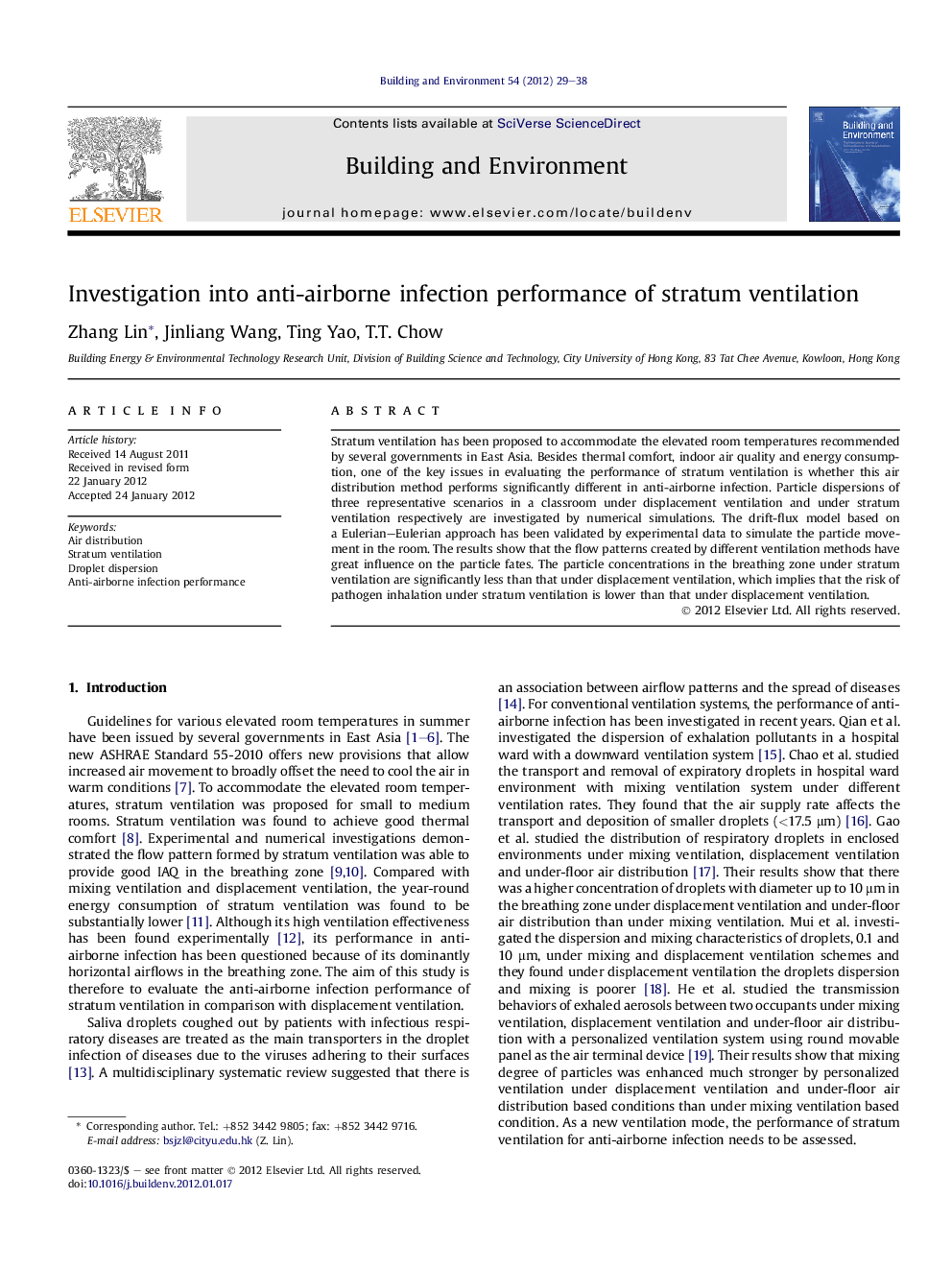| کد مقاله | کد نشریه | سال انتشار | مقاله انگلیسی | نسخه تمام متن |
|---|---|---|---|---|
| 248563 | 502575 | 2012 | 10 صفحه PDF | دانلود رایگان |

Stratum ventilation has been proposed to accommodate the elevated room temperatures recommended by several governments in East Asia. Besides thermal comfort, indoor air quality and energy consumption, one of the key issues in evaluating the performance of stratum ventilation is whether this air distribution method performs significantly different in anti-airborne infection. Particle dispersions of three representative scenarios in a classroom under displacement ventilation and under stratum ventilation respectively are investigated by numerical simulations. The drift-flux model based on a Eulerian–Eulerian approach has been validated by experimental data to simulate the particle movement in the room. The results show that the flow patterns created by different ventilation methods have great influence on the particle fates. The particle concentrations in the breathing zone under stratum ventilation are significantly less than that under displacement ventilation, which implies that the risk of pathogen inhalation under stratum ventilation is lower than that under displacement ventilation.
► A room under stratum ventilation or under displacement ventilation.
► Droplets sneezed by occupants.
► Significantly different droplets concentration distributions are found.
► Different infection risks.
► Stratum ventilation manifests lower droplet concentration in the breathing zone.
Journal: Building and Environment - Volume 54, August 2012, Pages 29–38